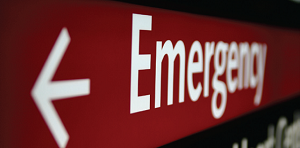Emergency Management Guidelines
WHAT TO DO IN THE EVENT OF A CAMPUS EMERGENCY
Emergencies can occur at any time, often without warning. This information can help you deal with many emergency situations appropriately. Your judgment often determines whether an incident is an emergency. If in doubt, err on the side of safety.
Quick References: Emergency Guidelines; Campus Community Emergency Response Team; Safety Devices; Areas of Refuge; AEDs; Emergency Call Boxes; Eyewash & Safety Showers; Severe Weather Shelters; Contacts
Be informed and prepared in advance. Be familiar with important features of the buildings that you frequently occupy, such as:
- Evacuation routes;
- Exit locations;
- Areas of refuge;
- Severe weather shelter areas;
- Locations of safety equipment; and
- How you will be notified of emergencies.
Campus Community Emergency Response Team (Campus CERT or CCERT)
- Campus CERT members, stationed in many campus buildings, help building occupants to evacuate, shelter or otherwise respond to emergency situations. They attend 19 hours of training and are specially equipped to assist with emergency response until professional responders arrive.
- Team members are responsible for their own safety first, followed by assisting others as possible.
- Follow instructions of Campus CERT members during an emergency.
Safety Devices
Auburn University is committed to the safety of our campus community. Some of the safety devices available on campus include:
Areas of Refuge
- Available in some buildings with multiple floors.
- Designed to provide a place for people who cannot evacuate to await assistance from emergency responders.
- Designed with two-hour fire-rated construction and a means of communication with emergency personnel.
- Marked with signage for easy identification.
Automated External Defibrillators (AEDs)
- AEDs can help save the life of someone suffering from sudden cardiac arrest, a leading cause of death in the United States.
- Auburn University has installed AEDs that are completely automated and can be used by anyone. Simply open the cover, and the AED provides step-by-step instructions.
- If someone is unresponsive, do not hesitate to use an AED.
- Nearly 200 emergency call boxes (also called "blue light emergency phones") have been installed around campus.
- When activated, these call boxes dial 911 and indicate their location to the dispatcher.
- Use the call boxes to summon help quickly during an emergency.
- Do not hesitate to use a call box for any type of emergency.
Eyewash Stations and Safety Showers
- Provided in areas where chemicals are routinely used, especially in or near laboratories.
- Designed to be used continuously for 15 or more minutes if someone gets a hazardous material in their eyes or on their skin.
- Shelter areas are designated in each campus building.
- Look for them in interior areas of the lower floors of the building. They are marked with white and green signs.
- Be familiar with their locations and be prepared to seek shelter if a tornado warning is issued.
- During tornado watches and warnings (24/7/365), Greene Hall (at the College of Veterinary Medicine) and Draughon Library are open for those who don't have a more suitable place to seek shelter.
| EMERGENCIES | DIAL 911 |
| AU Campus Safety & Security | Phone: 334-844-8888 On-Call Phone (24/7): 334-750-9795 Web: www.auburn.edu/safety Email: campussafety@auburn.edu |
| Auburn Fire Division | Phone: 334-501-3100, opt 1 |
| Auburn Police Division | Phone: 334-501-3100, opt 1 |
| Auburn Police Division Crime Stoppers Tip Line (Call or Text) |
Phone: 334-246-1391 |



